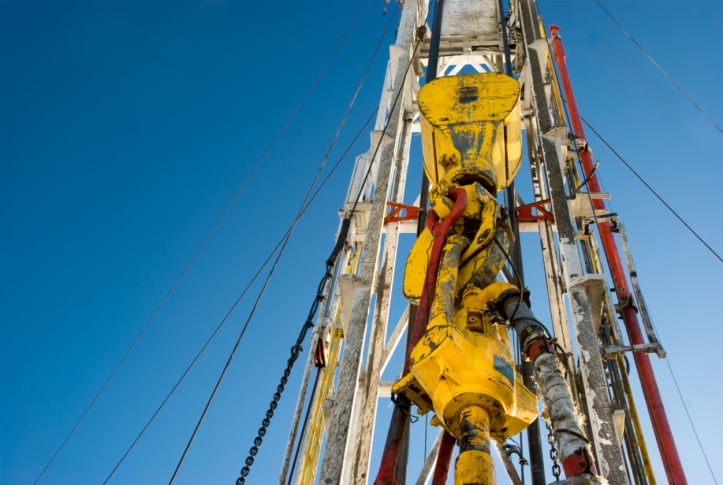
Source: Thinkstock
The boom in U.S. production is set to displace Russia as the top oil-producing country by next year. Had you said this to anyone five years ago, you might have been laughed out of the room. And as both OPEC and the IEA have made clear, the U.S. is not likely to stay on top for long.
That view is not widely shared among the companies that are operating in the Bakken shale play or the Niobrara or the Eagle Ford or the Permian Basin or any of a number of other shale regions. In fact, more than one company think that the boom is just getting underway.
We should assume, of course, that both sides are talking their book, but if we take a look at what’s happening in the shale plays, the scales tip in favor of the operators and away from the cartel and the IEA for two basic reasons. First, technological advances, and second, the vast size of the resource.
Technology first. Continental Resources Inc. (NYSE: CLR) is the largest leaseholder in the Bakken shale play and has been working the field for the longest time. In its third quarter earnings report the company said it had reduced its average well cost to $8 million, two months earlier and $200,000 below its target price. Much of this savings is related to a new technique where one well-pad serves several wells, each of which is draining a different part of the oil-bearing rock.
According to an engineering manager at oil field services giant Schlumberger Ltd. (NYSE: SLB) told Platts that U.S. shale production is only going to go up. His reasons: the vast size of the resource and growing familiarity with it. He also said that there’s plenty of room to improve extraction techniques and minimize the pushback from environmental groups. In the Eagle Ford shale play, for example, Schlumberger now uses well log data to determine the first five wells to drill in a new area. The technique has improved production by 33%.
Everyone knows that fracked wells produce at their maximum level within a very short period of time compared with conventional vertical drilling techniques. Everyone also knows that the maximum level of production tapers off just as quickly and has a very short tail. What not everyone knows is that horizontal drilling techniques and hydraulic fracturing currently recover less than 20% of the oil in place, and in some places even less than that. As technology improves and gets cheaper, companies will return and squeeze more oil out of the reservoir.
Another area where technology has vastly improved is in water consumption. A Texas company is developing technology that uses no fresh water and others have figured out methods for reclaiming 95% of the water used in fracking operations.
Total production costs have fallen from around $80 a barrel three years ago to around $50 to $60 a barrel today at the most advanced producers’ sites. As WTI prices continue to slide, wringing out production costs will become more important than ever. Energy consulting firm Bentek has said that even if oil prices fall to around $60 a barrel production will continue to grow.
We’ve already noted that Continental Resources and Schlumberger are advancing drilling technology and making money while doing it. Other publicly traded firms developing better and cheaper ways of extracting oil include SAP AG (NYSE: SAP), which has developed technology that allows a drilling company to monitor the operation of thousands of pieces of equipment in real time from a single location. The software has cut maintenance and repair time in half, and when downtime can cost half a million dollars a day, the software quickly pays for itself.
Chevron Corp. (NYSE: CVX) currently reuses all the water it uses for drilling in the Marcellus shale play in Pennsylvania, and reuses about 80% of the produced water that flows from producing wells. The company believes that regulatory agencies could soon require that 100% of the produced water be recycled, and it is aiming to do just that.
The fastest growing segment of General Electric Co. (NYSE: GE) is its oil and gas equipment business which contributed more than $15 billion to the company’s 2012 revenues and more than $2 billion to earnings. Like SAP, GE is getting into the big data business as a complement to its existing work as a designer and manufacturer of compressors, turbines, generators, and other drilling equipment.
Will the fracking revolution carry the U.S. to the top spot in global oil production? Absolutely, but the question is how long can it stay there. OPEC and the IEA reckon not for long. But given the size of the resource and the number of big, experienced firms that continue to invest billions of dollars in technology to get even more out of U.S. shale plays, expecting U.S. production to peak in less than six years seems like a foolish bet.
Sponsored: Want to Retire Early? Here’s a Great First Step
Want retirement to come a few years earlier than you’d planned? Or are you ready to retire now, but want an extra set of eyes on your finances?
Now you can speak with up to 3 financial experts in your area for FREE. By simply clicking here you can begin to match with financial professionals who can help you build your plan to retire early. And the best part? The first conversation with them is free.
Click here to match with up to 3 financial pros who would be excited to help you make financial decisions.
Thank you for reading! Have some feedback for us?
Contact the 24/7 Wall St. editorial team.



